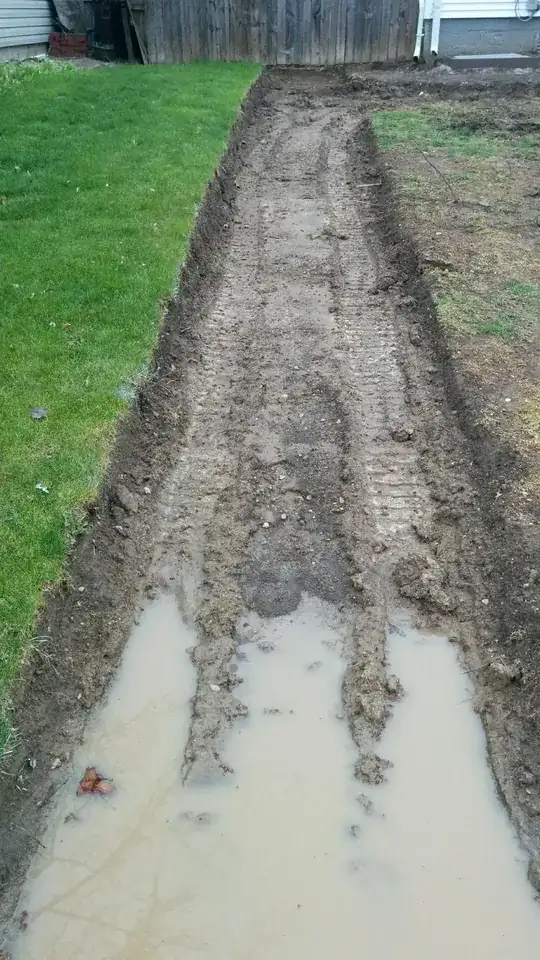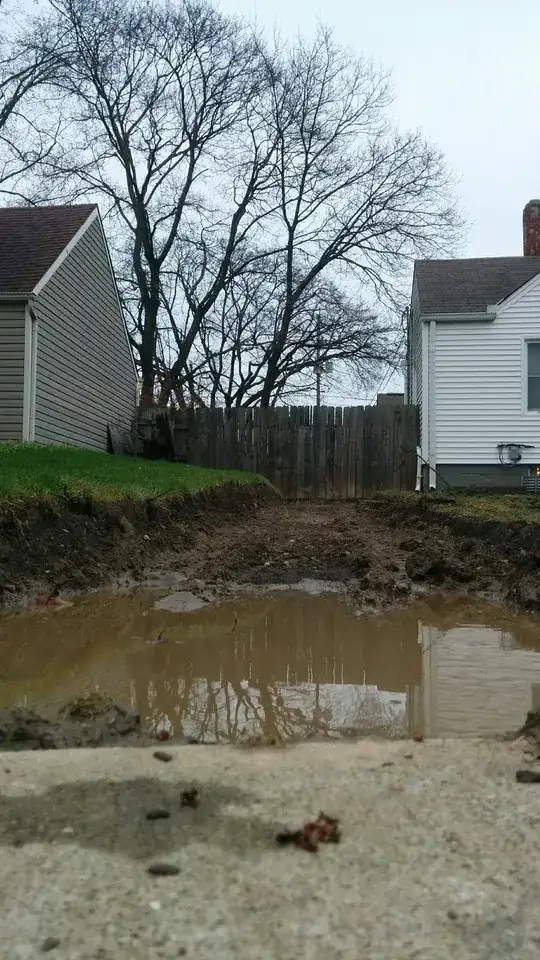The easiest way I see would be to dig a DRY WELL. Right where that water is pooling dig a sizeable hole; 6X4', and line the hole with landscape fabric, then fill with drain rock, cover with landscape fabric keeping the top level with the bottom of the walkway you are making, delineate your walkway with pt 2X4's staked (top of 2X4's level with walkway gravel after compaction) and screwed firmly to stakes. Line entire bottom of walkway with landscape fabric, fill with 3/8 minus crushed gravel not pea gravel, 4" deep after compaction and you'll have a nice clean walkway. Make the end and beginning of this walkway far larger than the 3' wide walkway, sort of mini patios, especially next to the home. Get the soil under your fence dug down so no grass, soil or gravel touches the wood. Same for your siding.
Nope, make that dry well even larger after looking at it again... by twice those measurements. At least 4' deep to collect water to allow excess water to percolate back into the ground. It is a big no no to drain to other properties. Keep the top of the walkway level with the highest lawn, fill the other side and I would make plant beds instead of more lawn. Gravel at least 4" deep. 3/8 minus gravel one can walk on and looks finished. You could even make the beginning of this walk surfaced with concrete pavers on top of compacted 2" of sand. Pavers butt up to each other no spaces and the edging is this black plastic stuff with huge 'nails' to keep pavers from moving. Can't see it! The rest of the gravel should be done with pt2X4's. Always use screws when building with wood...as much as possible esp. in the out of doors! Let me know if you need clarification. Concrete pavers that look best and work best for DIY are Roman Cobble; 2"X7"X9"...ONLY IN GREY. Do not get fancy with color. You will regret...should match the gravel and gray patina of wood and your foundation. Seriously. Colors look DIY and dirty or moldy!!

